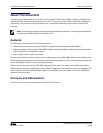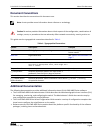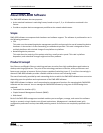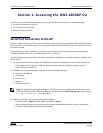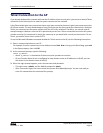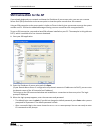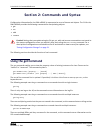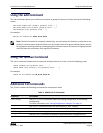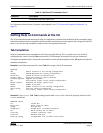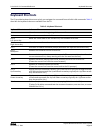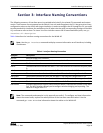
Using the Set Command
D-Link Unified Wired and Wireless Access System
November 7, 2011 Page 15
D-Link UAP CLI Command Reference
The following example uses the get command on a named class to get all instances:
get mac-acl all mac
get mac-acl all
Using the Set Command
The set command enables you to set the property values of existing instances of a class. It has the following
syntax:
set unnamed-class
[with qualifier-property qualifier-value ... to] property value . . .
The first argument is an unnamed class in the configuration. Following the argument is an optional qualifier
that restricts the set to only some instances. For singleton classes (with only one instance) no qualifier is
needed. A qualifier starts with the keyword
with, and has a sequence of one or more qualifier-property
qualifier-value pairs, and ends with the keyword to. If these are included, then only instances whose present
value of qualifier-property is qualifier-value will be set. The qualifier-value arguments cannot contain spaces.
Therefore, you cannot select instances whose desired qualifier-value has a space in it.
The rest of the command line contains property-value pairs.
set named-class instance | all [with qualifier-property qualifier-value ... to] property value...
The first argument is either a named class in the configuration.
The next argument is either the name of the instance to set, or the keyword
all, which indicates that all
instances should be set. Classes with multiple instances can be set consecutively in the same command line, as
shown in Example 4 below. The qualifier-value arguments cannot contain spaces.
The following examples show
set commands.
•
set interface wlan0 ssid “Vicky's AP”
• set radio all beacon-interval 200
• set tx-queue wlan0 with queue data0 to aifs 3
• set tx-queue wlan0 with queue data0 to aifs 7 cwmin 15 cwmax 1024 burst 0
• set vap vap2 with radio wlan0 to vlan-id 123
Note: The name wlan0bssvap0 refers to the basic service set (BSS) on the wlan0 interface. For
information on interfaces, see “Interface Naming Conventions” on page 20.
Note: For information on interfaces used in this example (such as wlan0 or vap2) see “Interface
Naming Conventions” on page 20.



